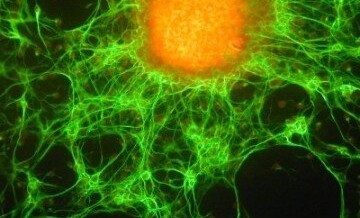
What’s the News? Stem cells! Mouse Embryonic Stem Cells!
Remarkably, much of the development happened spontaneously, indicating that even undifferentiated cells have a blueprint in mind. Researchers hope the work will someday yield transplantable retinas for people with diseases like retinitis pigmentosa.
“When I received the manuscript, I was stunned, I really was,” commented human molecular geneticist Robin Ali “I never though I’d see the day where you have recapitulation of development in a dish.”
How the Heck?
Supported by a gel that mimics cells’ natural environment, the stem cells were immersed in a bath of chemicals that directed their growth into retinal cells. Just as in normal embryonic development, over the course of about a week the cells organized themselves into a small sac that spontaneously folded itself in half to form the optic cup, a structure that consists of the retina and its supporting layer.
What’s the Context:
- Researchers have been working on retina replacement for some time: transplants of retinal stem cells alone have also been studied as treatments for malfunctioning retinas.
- Advanced Cell Therapy is investigating the use of human embryonic stem cells to treat another eye disease, macular degeneration.
- Petri-dish tissue is also an active area of research. Scientists recently grew human urethras from patient cells that were successfully transplanted into patients.
Not So Fast: Despite numerous hopeful headlines, growing retinas for transplantation into humans is not yet within reach. It’s not clear yet whether the retinas are functional—that is, whether they will talk to (and make sense to) the brain when inserted into an eye. Also, the technique will need to be adapted to human stem cells therapy, which is no easy feat.
APR
2011
